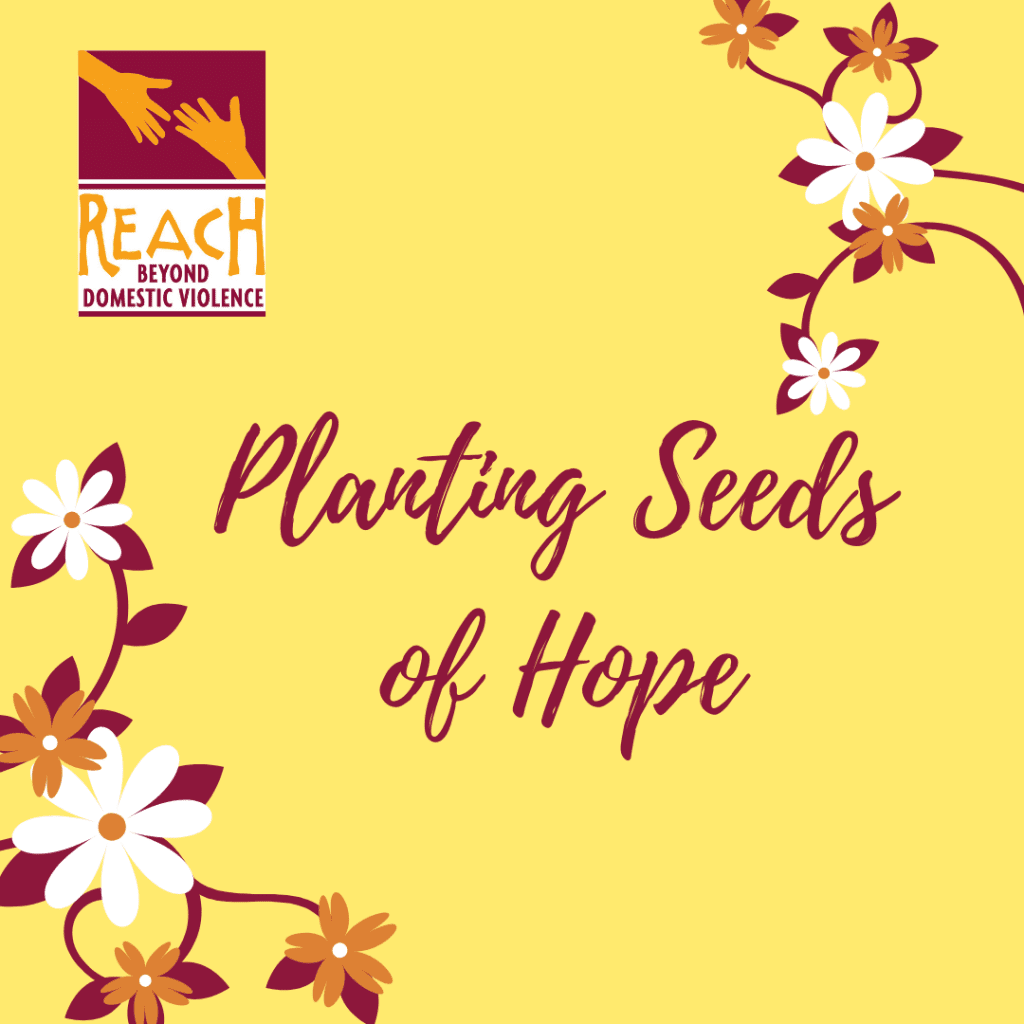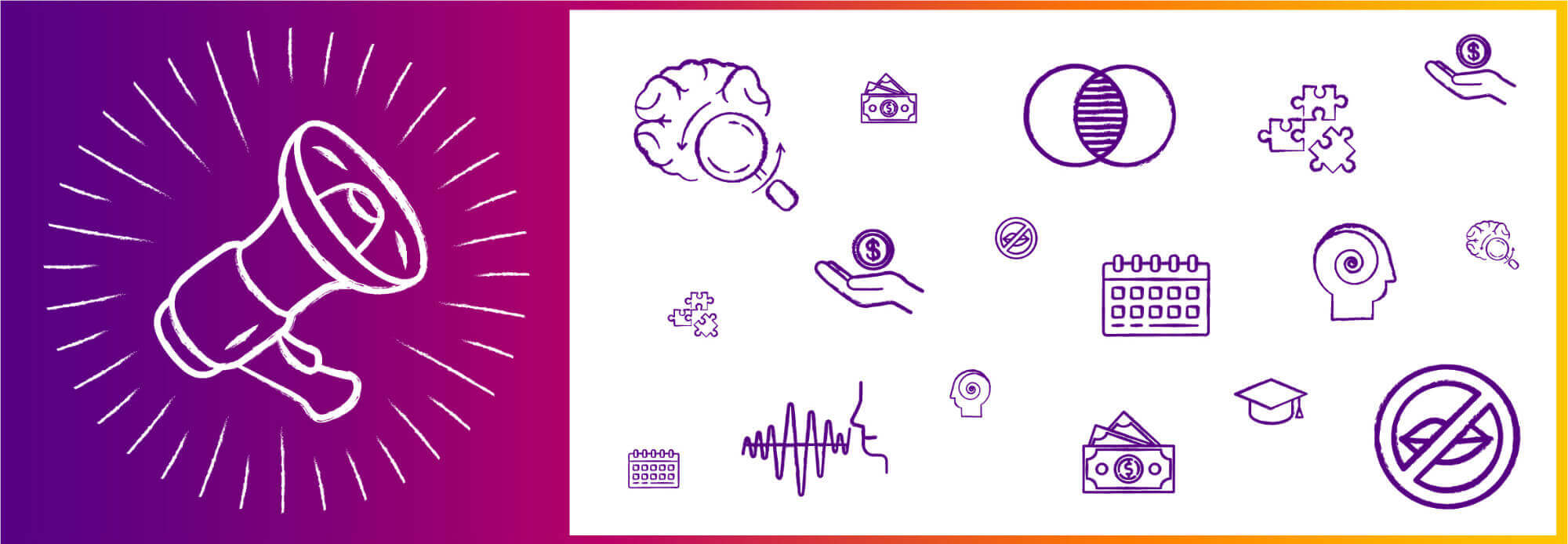“Planting Seeds of Hope was a nice opportunity to think and talk about why I have worked at REACH for so long. Although I feel it on a daily basis just by being here, it was different when putting it in to words and sharing that with my friends and family. Everyone has been so kind and their responses have been heartwarming. It is truly beyond what I expected. There were some people who were donating for me, because they know how important REACH is to me, but there were also many who were doing it for REACH and our mission. The success of this campaign is so representative of everything that REACH stands for in regards to building community and being in a relationship with each other. This is what we strive for every day.” – Deborah Heimel, Associate Executive Director
If you have been following us at all on social media or receive our emails, you are probably aware that at the end of April, REACH launched its first ever peer-to-peer fundraising campaign, Planting Seeds of Hope. In theory, peer-to-peer fundraising is fairly simple. Supporters are asked to create a personal fundraising page on behalf of REACH and share their page with friends, family and community members for donations (hence “peer-to-peer”). While the intention behind the campaign was to raise money to support REACH’s growing intervention and prevention programs, the results yielded so much more than just funds.

From the beginning, we encouraged those who have a strong connection with REACH (staff, volunteers, board members, etc.) to create a fundraising page and share it with their network. We provided ample materials and language for folks to use in their fundraising efforts, but our real hope was that they would draw from their own personal experiences with REACH and shine light on the incredible work that they are helping to make happen. With this being our first time doing an official peer-to-peer fundraising campaign, we weren’t sure exactly what to expect. We went in hoping that maybe 4 or 5 people would make pages and that we could potentially raise a few thousand dollars. What we didn’t expect was that in just two short weeks, more than 20 people would create personal pages to help us raise over $25,000. We also didn’t expect that for the most part, people didn’t use the language and materials that we provided. They told their own stories and shared personal anecdotes. Staff members wrote about their specific programs and what their day-to-day looks like here at REACH. Volunteers wrote about why they spend their valuable time working with survivors, and board members shared why they got involved with REACH in the first place. They let people know what REACH means to them and why they believe folks should donate their hard earned dollars to our mission.
Our Youth Education Specialist, Molly, shared this of her experience with the campaign,
“At first I was just going to put up a page using the template, because you made it so easy. But then I really thought about it- why does REACH do the work we do every day? What would a donation actually mean? One of my friends asked the question: “where does the money go?” and I provided a logistical response. Of course it goes to support programs, but on a larger scale, it goes toward REACH- to refuge, education, advocacy, and our prevention goal- change. That’s why I made a page, and that’s why I do this work each day.”
At first, there was some apprehension around participating in Planting Seeds of Hope. One of the main hesitations that folks had when setting up a fundraising page was that they had never fundraised before. Fundraising and asking for money can be intimidating and often times awkward, but at the end of the day, people don’t give to organizations, they give to people. They give to causes that the people in their life care and talk about. The staff, volunteers, and supporters at REACH have the loudest voice when it comes to spreading the message about the anti-violence work we are doing in the community. The stories they hear, the people they meet, their lived experience in this work, is something that can’t be replicated. Despite feeling hesitant, many participants were amazed by the response from their friends and family. As my colleague Lauren shared,
“I’m not a fundraiser… I’m used to having incredibly difficult conversations with people about domestic violence and about how to support a loved one they are concerned about, but when it comes to asking for financial support for this work? I fumble… So I was nervous about participating in a peer-to-peer fundraiser. Many of my friends and family members know what I do for work, that this is a cause I am so incredibly passionate about, but none have ever donated to the organization before. I was nervous that people would be annoyed by my asking- we all receive so many requests for financial donations every day, and many of my friends, like myself, work in lower paying roles doing social justice work. A donation can be a lot to ask… But I felt like I should participate, so I made a page, I shared a story of why I do this work, and I asked others to support it. I shared that small donations add up, and they sure did! My average donation amount was small, but in great numbers they grew to nearly $1,000! I am so grateful for everyone who donated and promoted this campaign.”
One of our values at REACH states “We are all in this together. We do our work as part of a larger movement. We are collaborative, supporting one another in task and spirit.” When it comes to my work in development, I refer to this value often and it always puts things in to perspective. Our community of supporters are our most valuable asset and they show up, every day, in every way possible. Whether they are accompanying a survivor to court, facilitating a training on domestic violence prevention, or putting together a fundraising page, they are using their voice and resources to let others know that domestic violence will not be tolerated and that they are part of the movement to end it altogether. In order to make social change happen, we have to use our voices collectively, because together, we are so much louder. One of our amazing volunteers, Jessica, shared this with us:
“When I learned about REACH’s Planting Seeds of Hope campaign, I was thrilled to play a role in their fundraising efforts. By simply creating a fundraising page and sharing it with friends and family, the result far exceeded what I could have contributed on my own. It just goes to show how much more we can accomplish collectively.”
Planting Seeds of Hope was a huge success because this campaign was about SO much more than just fundraising. It was about community building and storytelling. Staff and volunteers were able to give their friends and family a small glimpse as to what their day-to-day work at REACH looks like. The campaign was also about providing resources to a wider audience and letting new people know about the work we are doing in the community. The campaign was about making new connections: 136 of the people who donated to Planting Seeds of Hope were new donors. Our posts about the campaign were shared dozens of times. Maybe someone wasn’t able to make a donation, but they were able to learn about who we are and where to find us if they need to. What made Planting Seeds of Hope truly successful were the folks who came together to use their voices to make a difference. Together, we can make waves, and together, we will reach beyond domestic violence.





